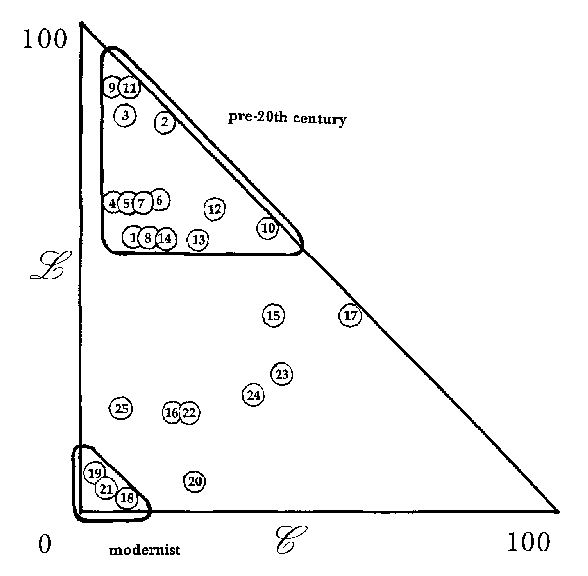 |
A building of a single color or without any color at all has color harmony, so H5 = 2. If different colors are used, one has to estimate how well the various hues blend to create an overall color harmony. Even with bright colors, a harmonious ensemble has H5 = 2. The departure from a unified color effect – something unbalanced, clashing, or garish – lowers H5 to zero. - Nikos A. Salingaros
The blue roof beside the Charles Bridge was something of the most annoying at my trip to Prague. It totally clashed with the enormous wholeness of the place. |
 |
| Mala Strana, Prague. There's no blue roof here, the wholeness of the place is complete. |
THE LINK TO BIOLOGICAL LIFE
The notion of “life” in architecture is due to Alexander (3), who has worked very hard to achieve it in his own buildings (16, 17, 18). Our formulation attempts to codify some of Alexander’s results. More than just creating a utilitarian structure, mankind strives to approach the intrinsic qualities of biological forms in its traditional and vernacular architectures. This result is not obvious, because very few buildings actually copy living forms: the resemblance is obtained by raising L via the structural temperature and harmony.
Starting initially from a traditionalist point of view, Charles, the Prince of Wales has also discovered style-independent rules that raise the architectural life. He calls these his ten principles (10). Although the approach and details are different, these developments are supported both by Alexander’s results, and by the model of this paper. The links between biological and architectural life are now being recognized formally. We are witnessing a convergence of ideas coming from several different directions, and forming an entirely new approach to architecture.
One class of examples of artificial objects that mimic living forms is beautiful self-similar fractal curves. The design temperature T of fractal curves is very high; the harmony H is also very high because they are self-similar (any portion, when magnified by a fixed factor, looks exactly like the original form) (4). Therefore, they have a high degree of architectural life L . As is well-known, fractal pictures resembling natural objects provide excellent representations(4), and this property serves to support our model.
The connection between biological life and architecture arises from the thermodynamics of living forms. Life is the result of an enormous amount of purposeful complication. Biological organisms are marvelously connected on all different levels, and they are characterized by very high design temperature and harmony. The connective thought processes underlying cognition themselves mimic the thermodynamic and connective structures that are characteristic of living forms. This helps to explain our instinct to relate to forms having a high degree of architectural life.
The architectural temperature mimics the activity of life processes, which is highly organized and structured. It should not be surprising that living beings instinctively copy the intrinsic qualities of living systems in their own creations. How can humans put an image of life into a building? Apart from figurative icons and statues, we work with emotions: structures are carefully tailored to generate positive psychological and physiological responses. Far from merely being a plausible hypothesis, this model suggests that humans have a basic need to raise the architectural life of their environment. - Nikos A. Salingaros
I strongly recommend reading carefully the whole essay by my good friend professor Nikos A. Salingaros!
- Life and Complexity in Architecture From a Thermodynamic Analogy
 |
| The architecture by Vltava in Prague is clustered in the upper corner, while the architecture of the fjord city Oslo is on the bottom line |
 |
| The new face of the fjord city Oslo, here is almost no life. The architecture is following the line between minimalism and deconstructivism, no traditional symmetries or patterns are to be found. An extreme expression of nihilism and anti-nature. |
 |
| The architecture of the river city Prague is all clustering in the upper corner of the triangle, full of life. |
Stemming from evidence-based design, neuroergonomics is a discipline that merges neuroscience and ergonomics in order to match design with human biological and psycho-neuro-immunological wellness. It scientifically upholds the call for a human-centred design by overhauling the user experience design, because it measures the real psycho-physical effects regardless of fashion, ideology, culture, or current use. - Stefano Serafini











No comments:
Post a Comment
Note: Only a member of this blog may post a comment.